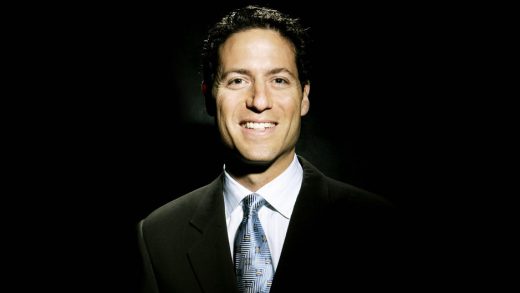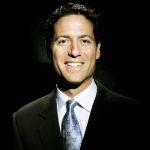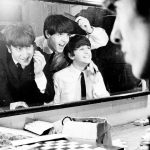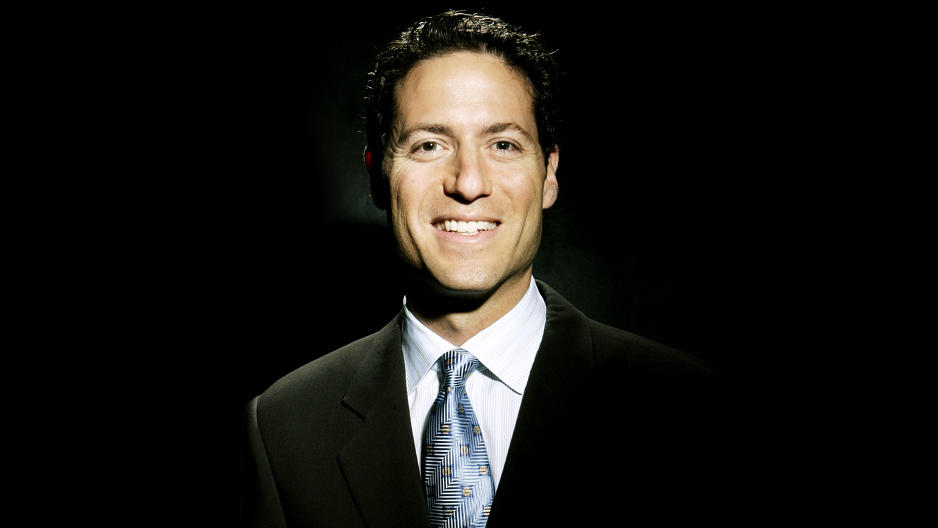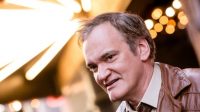Meet Mark Shapiro, WME-IMG’s Storyteller-In-Chief
“We’re in the emotion transportation business,” says Mark Shapiro. “Our job is to move people.”
Shapiro, who was recently named co-president of WME-IMG, tends to drop declarations like this frequently, a style honed over a career steeped in the worlds of sports and entertainment. Before joining WME-IMG in 2014, the kinetic, fast-talking executive was CEO of Dick Clark Prods., which produces the Golden Globes. He started his career at ESPN as a brash, programming wünderkind, where he pushed the network into original content and turned sportswriters into stars and flipped the World Series of Poker from an underground curiosity into a national phenomenon.
If Shapiro can veer toward drama, well, that’s his job. As head of the company’s content efforts, he’s tasked with looking out across WME-IMG’s disparate assets—as I chronicle in my feature on the company, it owns everything from the Miss Universe pageant to New York Fashion Week to the mixed-martial league Ultimate Fight Championship—and figuring out ways to turn them into entertainment. Or, as he likes to say, “good stories.” (Shapiro also oversees the company’s global partnerships division and has been key in landing deals with advertising heavyweights such as Visa and Anheuser Busch In-Bev.) It’s not always an intuitive task. Sports such as Professional Bull Riding and UFC naturally offer up the kind of spectacle and narrative that translate readily into shows such as Fearless, the Netflix documentary series that follows PBR riders. But Shapiro’s job extends to less obvious athletic endeavors such as Eleague, the esports league that WME-IMG created with Turner in a bid to get in on a sport that is exploding with young males. Shapiro’s task: Use his storytelling skills to help it cross over to the mainstream.
Shapiro honed his interest in crafting narratives, and ultimately “good TV,” as a kid. After his parents divorced, he and his four siblings would fly from Chicago to New York to visit his mother, who worked at Time magazine. “So you go there and mom’s gotta work. So Friday night was, get in a cab at LaGuardia, and go to Time Life, and we’d sit there till they closed the book, as it’s called. Which would be, like, one, two in the morning. But you just had your run of Time Inc. It was a great place to get lost,” Shapiro tells me.
One Friday night, Shapiro was sitting in editorial director Ray Cave’s office, “flipping through Sports Illustrated. I was 10 years old, and I was complaining. I said, ‘This is so thick!’ By the way, it’s so thin now. But it was just chock full of advertising and it was annoying because I’d have to go 12 pages later to continue a story.” Cave didn’t throw Shapiro out. He sat down and listened to him.
I met with Shapiro on numerous occasions while reporting my WME-IMG feature, and he walked me through how he’s looking at some of the company’s properties. Here are excerpts from our chats.
UFC
WME-IMG bought the mixed-martial arts league in August for $4 billion along with a consortium of investors. Now the company is trying to turbo-charge it into a sport with populist appeal.
“With UFC, content and business is what I’m looking at,” Shapiro says. “From a marketing perspective, how are we marketing the events to grow our Pay Per View business, to grow Fight Pass (the UFC’s OTT service), to bring more attendance into every one of these cities? Whether it’s being staged in Cleveland for the first time like it was this year, or it’s in its usual home of Las Vegas.”
“Then just content,” he continues. “How we can make the telecast better? How can we work with Fox or whomever our partner is to make the telecast better? How can we make our telecast on Fight Pass better? How can we make Fight Pass as a whole better with the programming we can offer around the fights themselves? It’s in totality, [we’re] looking at the content on both linear and an OTT basis.
“The NBA is the NBA because they’ve had distinct eras. Magic Johnson. Larry Bird. Michael Jordan. LeBron James and Kobe Bryant. They’ve had these eras where individual superstars really drove the league. You were cheering for your team, but you were also cheering for that individual star. Certainly one of our missions is to create more stars. The good news is, the UFC has a dugout, a big dugout of untapped potential.
“[Then we bring in] huge fight fans. Tom Brady’s a big UFC fan. Justin Timberlake, big UFC fan. Very similar to boxing, by the way. It’s always attracted big stars from all walks of life. There’s no shortage when it comes to UFC. That’s going to be put on steroids. Diesel fuel with WME-IMG. We’re going to expose it to so many of the clients that we represent. I’ve got models asking, ‘Now tell me what you guys were thinking with UFC? How did that fit into the plan?’ That’s a good conversation to have.”
ELeague
The first season of ELeague aired on TBS on Friday nights over the summer. The show had the production value of American Idol, though it has a long way to go before it captures the level of audience that the Fox juggernaut did in its heyday. According to Digiday, the season averaged 271,000 viewers across live and time-shifted viewing on TBS. Online—the tournament streams on Twitch—it attracted a more auspicious 18.7 million viewers. At the heart of WME-IMG and Turner’s challenge is to turn the series into something more emotionally gripping than teams of pasty-faced geeks staring into computer screens.
“It’s like the World Series of Poker,” says Shapiro. “We launched that (at ESPN) and it was like, ‘what are you doing? Cards? Is that a sport?’ And we got behind two things. Technology, the hole-cam made a huge difference. Putting that into the table was revolutionary at the time. And then the personalities. It’s all the stories. It all comes back to storytelling. If you’re the underdog, the guy with attitude, the guy who opens his mouth, the guy who never speaks, the guy who’s bluffing—there are so many ways to go!
“And that’s the way I see Eleague. No matter what, we need a high production value, we need a strong narrative. We need to tell the stories of the individuals playing and their background: how they got there. Their team, why they’re doing this, what they aspire to be. The more you connect with them, the more you’re gonna come back week to week.”
Shapiro believes that storytelling is at the heart of WME-IMG’s content business. Once that is achieved, then the whole interconnected system kicks into gear. “If the ratings get up there, well now it’s an offshoot and we’re moving out of the Atlanta studio and we move it into the Georgia Tech Center and we sell tickets. [Georgia Tech is a client of IMG College, which sells media rights on behalf of collegiate athletic programs.] And then we sell sponsorships. And then we have the whole [food and beverage] business, and now these players become stars. We represent half those teams. So they become bigger, and then they obviously have more earnings potential and power. They want us to make them more money. In turn, we make more money. It feeds itself. The whole cycle. But you’ve gotta have good programming. Critically acclaimed, quality programming first. Where people say, ‘Check it out. It’s a good story.’ Before anything else.”
PBR
WME-IMG bought PBR in 2015 after representing the sport for years and immediately set out to aggressively rebrand it. Client Steven Tyler was tapped to perform the new PBR theme song; a bull-riding series was sold to Netflix; and a new advertising campaign launched late in the summer featuring the top riders.
“Bull riding was our first acquisition for the most part,” Shapiro says. “At the time it was certainly the biggest. It was like, wait a minute. O.K., their TV deal is coming up with CBS, we can renegotiate that. The rights they had, digital rights, there was so much that they didn’t exercise. And then, just across the board, from ticketing to marketing to social media to the sponsorships we could bring in, to the events we could stage, to the fact that we could actually do the production (of the tournaments) and do it better that it’s being done.
“We signed a bull rider as a model. [Bonner Bolton] We’ve done a whole series of portraits on riders, using one of our fashion photographers who happens to be a bull riding fan. We’re doing an OTT platform, a new app. There’s a Netflix series, and we’re about to close a deal with Hearst-Verizon. They’ve got what’s called the RatedRed network and they’re trying to create programming to target the Red states. With PBR, we’re like, hello! So we’re gonna send them a 10-episode series where they’re following—it’s multi-episode, multi-cast—so you’re following the rider, you’re following the bull, following the coach, following the guys who work in the pits. So you get all these different angles. So that’s where it makes the most sense and that’s where we can create the most value to our partners as well.
“We’ve gotten more programming on CBS itself, following the NFL. So we’re just using all of our relationships to really . . . it’s all sampling. It’s so fragmented. I used to say that at ESPN, but it’s so much more fragmented now. It’s all just kind of white noise. People are surfing all the time. You have to be everywhere.”
Fast Company , Read Full Story
(32)

